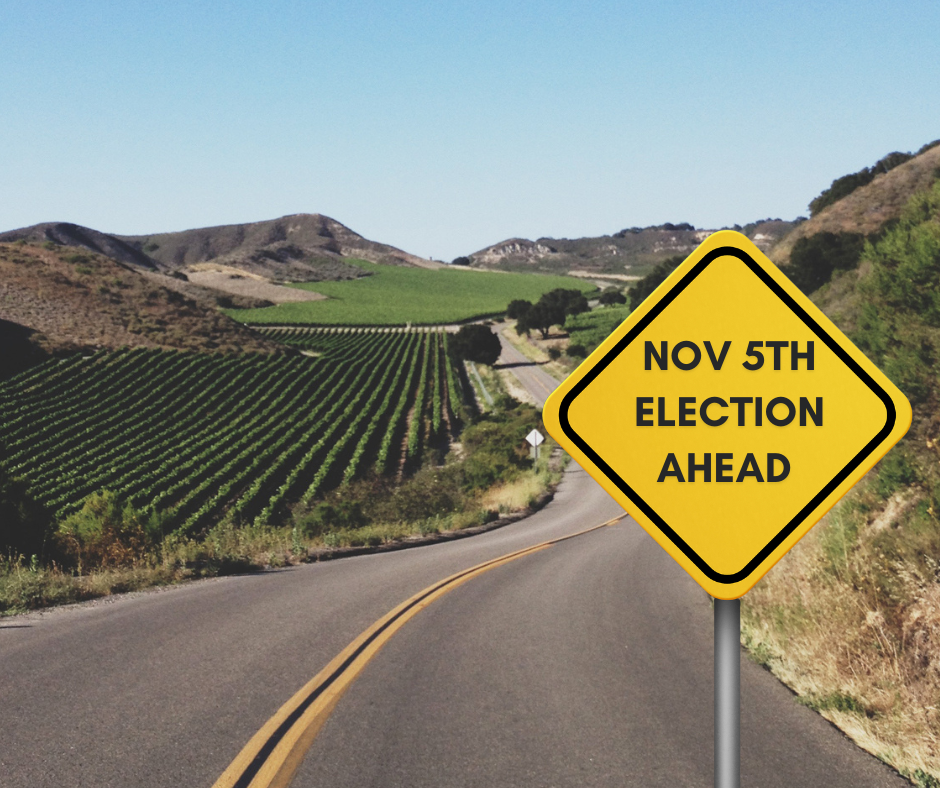About the Primary, Primarily
- LWVNC

- Feb 8, 2024
- 4 min read
By Robyn Orsini

Q: In a primary election, how does the regular election part of the ballot differ from the presidential election part?
A: The 2024 primary election has two parts: (1) all voters help to choose local and state government officials and vote for or against Proposition 1, the only measure on the California ballot, and (2) members of a political party vote for delegates who will represent their favorite candidate hoping to run for US president. Find details about the proposition and many election resources in this Voter.
Q: How does the regular part of the election work?
A: Local, state, and federal elections occur every two, four, or six years. Party/no party affiliations are usually stated on the ballot, and members of the same party often run against each other. All state and federal candidates for office (except president) will appear on your ballot and all voters may vote for any candidate, regardless of their party/no party affiliation.
Q: What offices are on the regular part of the primary ballot?
A: Local. Napa County voters will be electing new representatives to the Board of Supervisors from Districts 2, 4, and 5. Each district has two declared candidates on the ballot. Filing for write-in candidates is open until February 20th. To win, a candidate must receive a majority of votes cast. If no candidate receives a majority vote, the top-two candidates will appear in a run-off on the November 5th general election ballot, where the candidate with the most votes wins. State. California Senator Bill Dodd (representing District 3, which includes Napa County) has termed out (4-year term) and 5 candidates are running to replace him. Assembly member Cecilia Aguiar-Curry (District 3) is running unopposed. Federal. There is hot race to replace US Senator Diane Feinstein, who died in September 2023 while in office. Two contests will be on the ballot, one to complete the current term (November 2024–January 2025; 4 candidates) and one for a full six-year term (January 2025–January 2031; 27 candidates).
There are 4 candidates for US congressional Representative, the longtime incumbent and 3 opponents. When there are more than two candidates, the top-two winners, who are often members of the same political party, will go on to the general election.
Q: That’s pretty straightforward. So how does the presidential part of the election work?
A: Voting for candidates for US president is more complicated and can be confusing. Every four years each state holds a presidential primary election or caucus. The purpose of a primary/caucus is for each state’s political parties to elect delegates to attend their parties’ national nominating conventions, held in the summer. At these conventions every party’s candidate for president is chosen. Candidates for president are on the campaign trail to convince voters to prefer them among others in their party’s lineup. Every state has its own rules governing delegate elections and responsibilities.
Q: When are primaries held?
A: Primaries are held sometime between February and June. This year, Super Tuesday is on March 5th when California will join 14 other states and territories to choose delegates to their parties’ conventions.
Q: What are the rules for voting for California’s party delegates?
A: To vote in the presidential part of a primary election, you must be registered to vote in one of the six political parties operating in California: American Independent, Democratic, Green, Libertarian, Peace & Freedom, or Republican. You can only vote for one of the candidates from the party with which you are registered. Your ballot will only show the names of the candidates in that party. Remember, when you vote for a name on your ballot, you are actually voting for a group of delegates representing that candidate, who will put the winner’s name forward at that party’s national convention.
Q: How many candidates are running in each party?
A: In California, the two most powerful parties are Democratic and Republican. In the primary race, 7 candidates are running for US president on the Democratic ticket, 9 are running on the Republican ticket, and 3 are on the Peace & Freedom party ticket. And Green and Libertarian parties each has one unopposed candidate.
Q: What if I want to vote with for a different party’s candidate?
A: In California, the last day to register/re-register to vote by mail or on the internet is Tuesday, February 20th (two weeks before the election). Go to countyofnapa.org/elections. However, you may show up in person to a vote center before or on election day, Tuesday, March 5th, and register to vote or even change your party preference. You must cast your ballot while there. Find vote center locations and times of operation at the Elections Division website shown above. Note that ballots are being mailed this week, so you can help the Election Department by making any party status changes NOW.
Q: What if I am not a member of a political party but want to vote in a party race?
A: Voters who register with no party preference (NPP; aka Decline to State or Independent), will not show any presidential candidates on their ballot. However, the Democratic, Libertarian, and American Independent parties allow cross-over voting. To receive a crossover ballot, just mail back the NPP ballot along with your request up to one week before election day. After February 27th, unvoted NPP ballots can be exchanged in person at the Election Division or at any vote center from Saturday, March 2nd, through Election Day, 8:00 pm on March 5th.
Back to February 2024 Voter







Comments